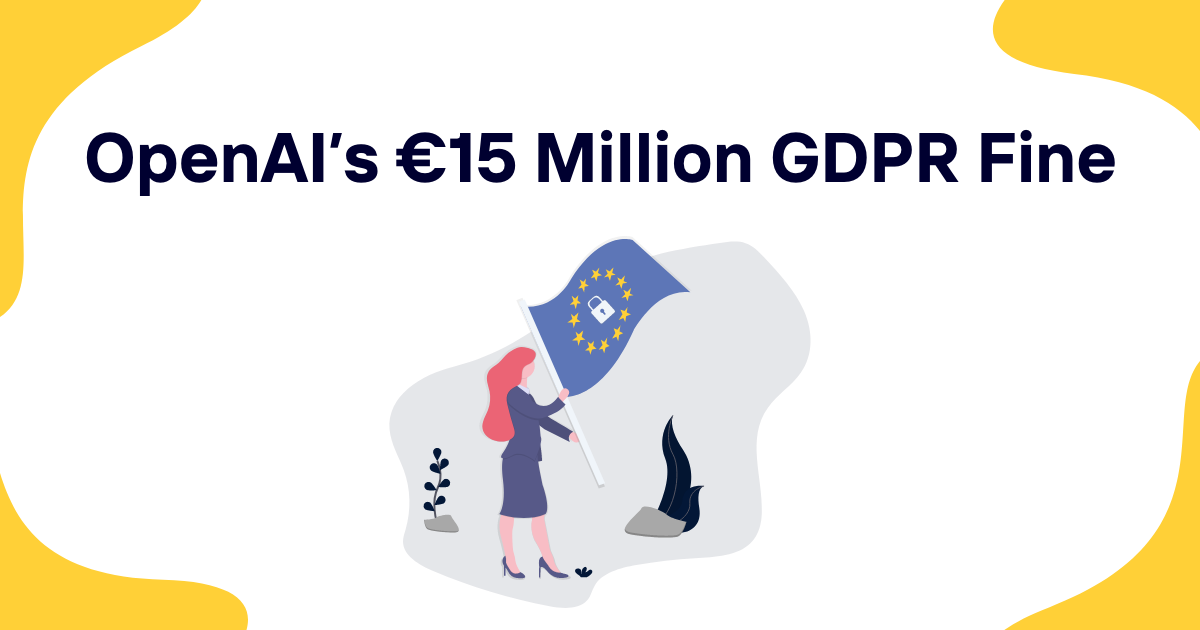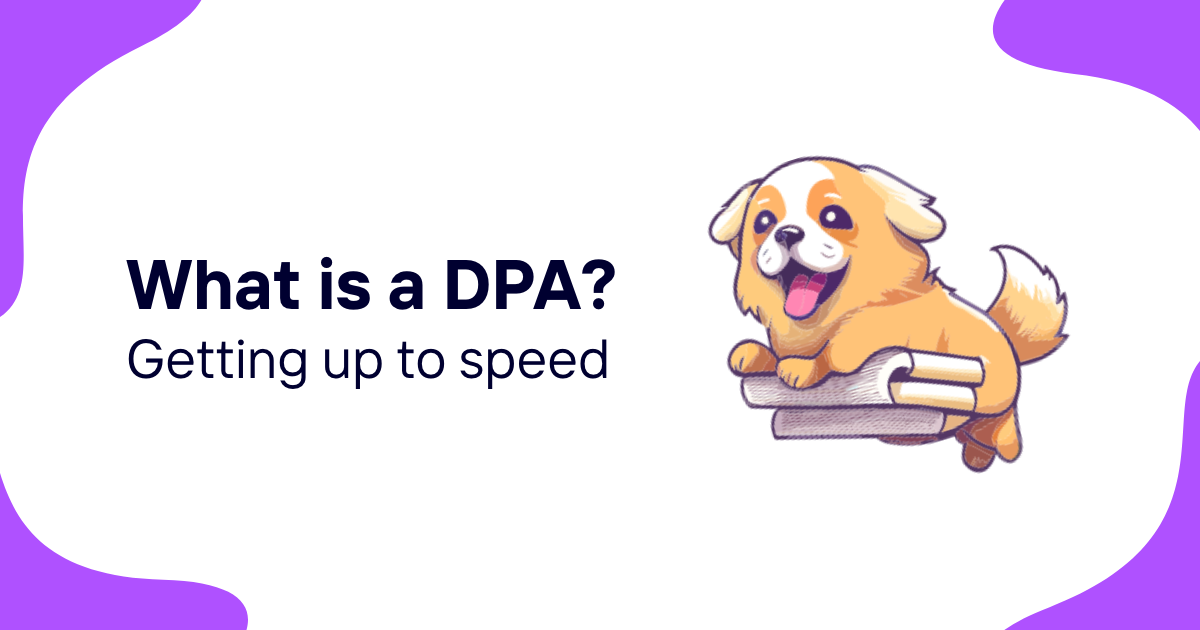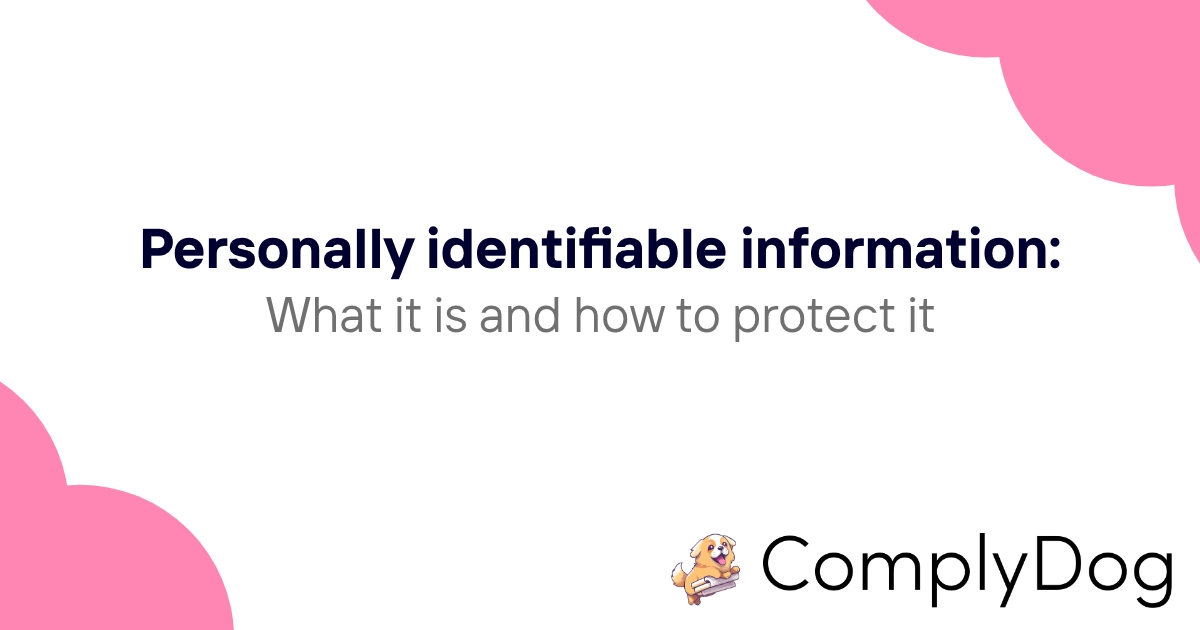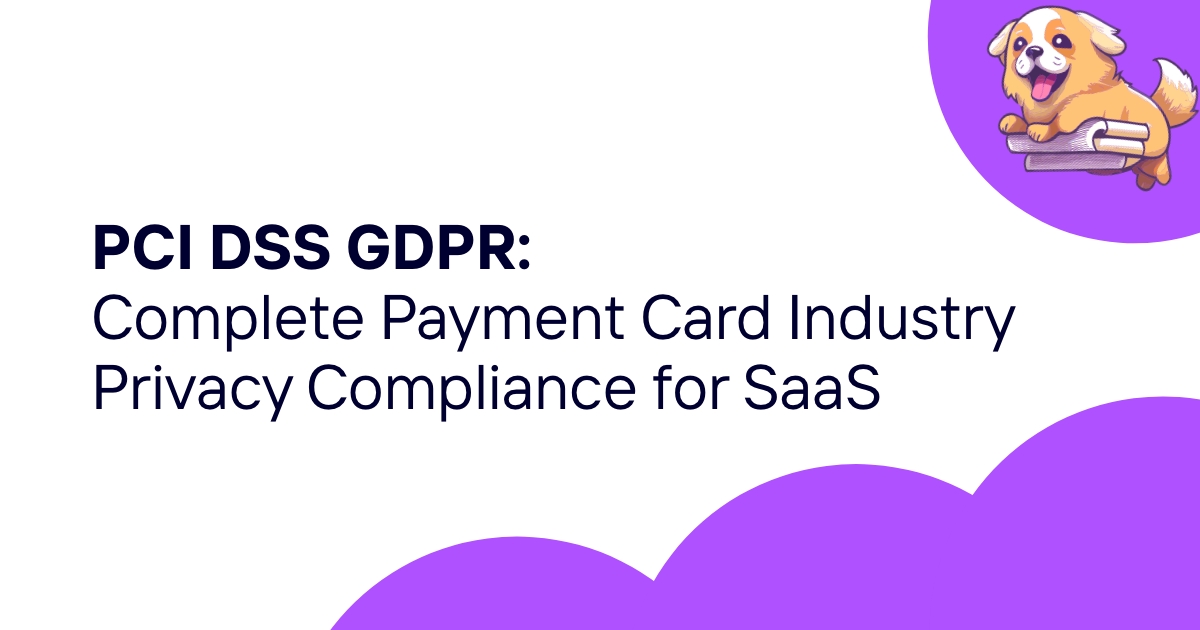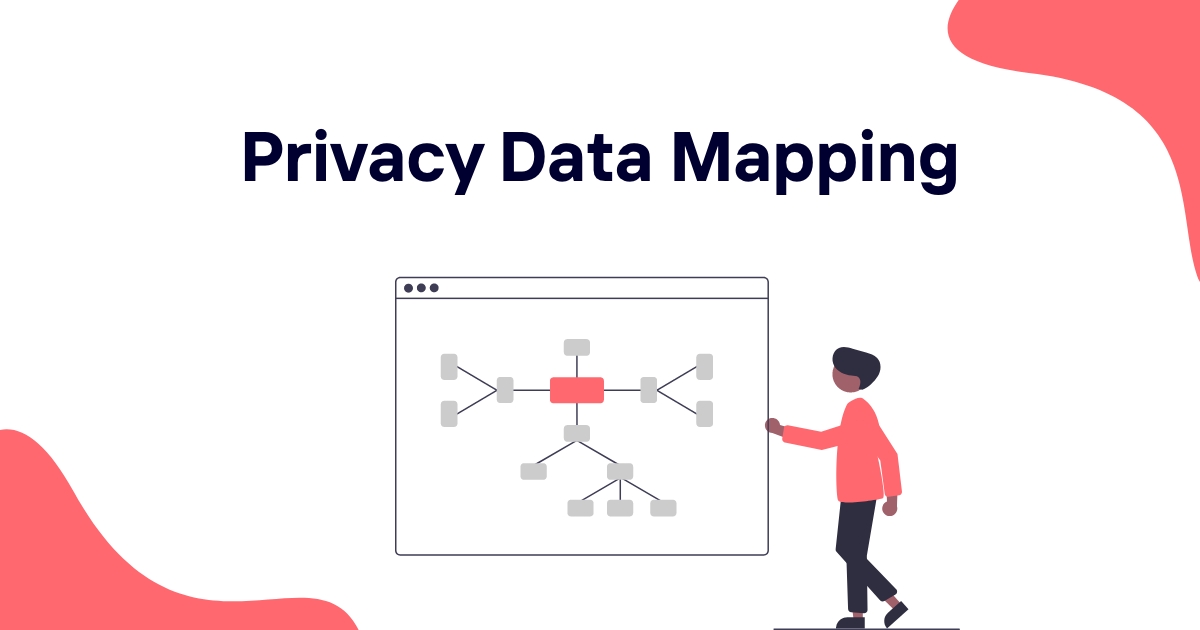Most organizations have no clue where their sensitive data lives. Credit card numbers hiding in old spreadsheets. Social security numbers buried in email attachments. Patient records scattered across shared drives. This invisible data creates massive compliance headaches and security vulnerabilities that could cost millions in fines.
Sensitive data discovery changes this dangerous game of hide-and-seek. It's the systematic process of identifying, locating, and cataloging confidential information across your entire digital infrastructure. Think of it as a sophisticated treasure hunt—except the treasure could bankrupt you if found by the wrong people.
Companies that skip this step often learn about their data exposure the hard way. Through breach notifications. Regulatory investigations. Hefty penalties. But organizations that get ahead of the problem build stronger defenses and sleep better at night.
Table of contents
- What is sensitive data discovery?
- Why sensitive data discovery matters
- Types of sensitive data to discover
- Common locations where sensitive data hides
- Sensitive data discovery methods
- Classification strategies that actually work
- Industry-specific discovery challenges
- Building a discovery program
- Technology solutions for data discovery
- Measuring success and ongoing monitoring
- Legal and regulatory considerations
- Future trends in data discovery
What is sensitive data discovery?
Sensitive data discovery identifies and maps confidential information throughout an organization's digital ecosystem. This process goes beyond simple keyword searches to examine file contents, database records, email communications, and cloud storage for patterns that indicate sensitive information.
The practice combines automated scanning tools with manual review processes. Software agents crawl through networks looking for specific data patterns—social security numbers, credit card details, medical records, or proprietary business information. But technology alone isn't enough. Human expertise provides context and validates findings.
Discovery differs from basic data audits. Regular audits might count files or measure storage usage. Discovery digs deeper to understand what information those files actually contain and how sensitive that information might be.
Modern discovery programs examine structured and unstructured data. Databases with organized records get scanned alongside messy file shares filled with random documents. Email archives, backup systems, and mobile devices all fall under the microscope.
The goal extends beyond simple compliance checkboxes. Good discovery programs create detailed data maps showing exactly where sensitive information lives, who has access, and how it flows through business processes.
Why sensitive data discovery matters
Data breaches cost organizations an average of $4.45 million per incident. But discovering sensitive data early can prevent many of these expensive disasters. Organizations that know where their valuable information lives can protect it properly.
Regulatory compliance drives much of the discovery demand. GDPR fines can reach 4% of global revenue. HIPAA violations carry penalties up to $1.5 million per incident. State privacy laws add another layer of complexity. Discovery helps organizations meet these requirements before regulators come knocking.
Shadow data poses massive hidden risks. Employees create copies of sensitive files for legitimate business purposes. These copies often end up in unsecured locations like personal cloud drives or local hard drives. Discovery programs find these orphaned datasets before they become problems.
Business efficiency improves when organizations understand their data landscape. Teams waste less time searching for information. Storage costs decrease when redundant files get eliminated. Decision-making improves when leaders have complete visibility into information assets.
Third-party vendor relationships create additional exposure points. Partners, contractors, and service providers often receive sensitive data for legitimate business purposes. Discovery programs track this information flow to prevent unauthorized sharing or retention.
The cost of ignorance keeps growing. Privacy regulations multiply each year. Cyber attacks become more sophisticated. Customer expectations for data protection continue rising. Organizations that wait to implement discovery programs face increasingly expensive consequences.
Types of sensitive data to discover
Personal information represents the most regulated category of sensitive data. This includes names, addresses, phone numbers, email addresses, and government-issued identification numbers. Even seemingly innocent information like birthdates or ZIP codes can identify individuals when combined with other data points.
Financial data requires special protection across industries. Credit card numbers, bank account details, tax records, and payment history all fall into this category. The Payment Card Industry Data Security Standard (PCI DSS) mandates specific protections for cardholder data, while various financial regulations govern other monetary information.
Health information receives strict legal protection through laws like HIPAA. Medical records, insurance information, prescription data, and treatment histories all qualify as protected health information. Even fitness tracker data or employee wellness program information might require special handling.
Intellectual property often represents the most valuable information an organization owns. Source code, product designs, manufacturing processes, marketing strategies, and research data can give competitors unfair advantages if exposed. Trade secrets lose their legal protection once they become public knowledge.
Corporate confidential information includes strategic plans, merger discussions, financial forecasts, employee records, and vendor contracts. While not always legally regulated, this information could damage competitive positioning or violate contractual obligations if disclosed improperly.
Authentication credentials deserve special attention during discovery efforts. Passwords, API keys, database connection strings, and encryption certificates often hide in configuration files or code repositories. These credentials can provide attackers with direct access to systems and data.
Common locations where sensitive data hides
Email systems accumulate sensitive information over years of business communications. Attachments contain contracts, financial reports, and customer data. Message bodies include account numbers, social security numbers, and confidential discussions. Email archives and backup systems multiply this exposure across multiple storage locations.
File shares and network drives become digital dumping grounds for sensitive documents. Employees save copies of important files "just in case" without considering security implications. Shared folders often inherit broad access permissions that allow unauthorized viewing of confidential information.
Database systems store obvious sensitive data but also hide it in unexpected places. Log files capture user queries that might contain personal information. Backup databases retain historical data that should have been purged. Development and testing databases often contain production data without proper protections.
Cloud storage platforms create new hiding spots for sensitive information. Personal cloud accounts used for business purposes fall outside corporate oversight. Shadow IT applications store business data without proper security controls. Multi-cloud environments make tracking data movement increasingly difficult.
Mobile devices and endpoints harbor sensitive information in various forms. Local file caches retain copies of accessed documents. Browser password managers store authentication credentials. Mobile apps sync data to personal cloud accounts outside corporate control.
Application logs and system files capture sensitive data during normal operations. Web server logs record user interactions that might include personal information. Error logs contain database queries with sensitive parameters. Crash dumps might include memory contents with confidential data.
Sensitive data discovery methods
Automated content analysis forms the backbone of modern discovery programs. Software tools scan file contents looking for patterns that match sensitive data types. Regular expressions identify social security numbers, credit card patterns, and other structured identifiers. Machine learning algorithms detect unstructured sensitive content like names or addresses.
Pattern recognition techniques identify sensitive information based on formatting and context clues. Social security numbers follow specific digit patterns and validation rules. Credit card numbers conform to industry-standard formats with checksum validation. Phone numbers and email addresses have recognizable structures that automated tools can detect reliably.
Fingerprinting approaches create unique signatures for sensitive documents. Tools generate mathematical hashes of known sensitive files and then search for identical or similar content across the organization. This method catches exact copies and near-duplicates that might have been renamed or slightly modified.
Contextual analysis examines surrounding information to validate potential matches. A nine-digit number near the word "SSN" likely represents a social security number. Credit card numbers appearing alongside expiration dates and names suggest payment information. Context reduces false positive rates and improves discovery accuracy.
Manual review processes provide human oversight for automated findings. Security professionals examine flagged content to confirm sensitivity and determine appropriate protection levels. Manual review also identifies sensitive information that automated tools might miss, such as proprietary business strategies or confidential communications.
Network monitoring techniques track sensitive data movement in real-time. Data loss prevention (DLP) systems watch network traffic for patterns indicating sensitive information transfer. These tools can identify data exfiltration attempts and unauthorized sharing before significant damage occurs.
Classification strategies that actually work
Risk-based classification assigns protection levels based on potential business impact. Public information requires minimal security controls. Internal data needs moderate protection from unauthorized external access. Confidential information demands strong access controls and encryption. Restricted data requires the highest security measures with limited access and detailed audit trails.
The following table outlines common classification levels and their characteristics:
| Classification Level | Risk Level | Access Control | Example Data Types |
|---|---|---|---|
| Public | Low | Open access | Marketing materials, press releases |
| Internal | Medium | Employee access only | Internal policies, org charts |
| Confidential | High | Role-based access | Customer data, financial records |
| Restricted | Critical | Need-to-know basis | Trade secrets, legal documents |
Automated classification tools speed up the process while maintaining consistency. Machine learning algorithms learn from human classification decisions and apply similar logic to new content. These systems can process thousands of files per hour while human reviewers handle edge cases and exceptions.
User-driven classification places responsibility on content creators and owners. Employees label documents during creation or modification based on established guidelines. This approach works well for new content but requires extensive training and ongoing enforcement to maintain accuracy.
Hybrid approaches combine automated discovery with human validation. Tools flag potential sensitive content and suggest appropriate classifications. Human reviewers confirm or adjust these recommendations based on business context and risk assessment. This method balances efficiency with accuracy.
Contextual classification considers how data gets used rather than just what it contains. Customer email addresses in a marketing database might receive different treatment than the same addresses in a financial system. Business context influences appropriate security controls and retention policies.
Dynamic reclassification adjusts protection levels as data ages or business conditions change. Merger negotiations become public after announcement. Employee records might become less sensitive after termination. Regular review processes ensure classification levels remain appropriate over time.
Industry-specific discovery challenges
Healthcare organizations face complex discovery requirements across multiple data types. Electronic health records contain obvious patient information requiring HIPAA protection. But sensitive data also hides in appointment scheduling systems, billing records, insurance claims, and research databases. Medical imaging files often contain patient identifiers embedded in metadata.
Financial services companies handle diverse sensitive information beyond obvious account details. Trading algorithms represent valuable intellectual property. Risk models contain proprietary business logic. Customer communications might include social security numbers or account information. Regulatory reporting systems aggregate sensitive data from multiple sources.
Government agencies manage citizen data with varying classification levels. Social service records contain personal information requiring privacy protection. Law enforcement databases include sensitive investigative details. Tax systems process financial information for millions of individuals. Cross-agency data sharing multiplies exposure points and compliance requirements.
Technology companies protect intellectual property alongside customer information. Source code repositories contain trade secrets and proprietary algorithms. Customer support systems capture personal information and technical details. Cloud service providers handle sensitive data belonging to multiple clients with different protection requirements.
Educational institutions collect student records protected by FERPA and other privacy laws. Research databases might contain personal information from study participants. Financial aid systems process sensitive family financial details. Alumni databases accumulate personal information over decades.
Manufacturing companies protect industrial processes and customer relationships. Product designs represent valuable intellectual property. Supply chain data reveals competitive advantages. Quality control records might contain customer-specific requirements or defect information.
Building a discovery program
Successful discovery programs start with clear scope definition and realistic timelines. Organizations must decide which systems, data types, and locations to include in initial discovery efforts. Starting with high-risk areas or regulatory requirements helps prioritize limited resources and demonstrate early value.
Executive sponsorship provides necessary authority and resources for discovery initiatives. Data discovery often reveals uncomfortable truths about information management practices. Strong leadership support helps overcome resistance and ensures adequate funding for remediation efforts.
Cross-functional teams bring diverse perspectives to discovery challenges. IT professionals understand technical systems and data flows. Legal experts provide regulatory guidance and risk assessment. Business users explain data usage patterns and value. Privacy professionals ensure compliance with data protection requirements.
Policy frameworks establish consistent approaches to discovery and classification. Written procedures define roles and responsibilities for ongoing discovery activities. Classification schemes provide standard labels and protection requirements. Escalation procedures handle disputes or unusual situations that require management attention.
Training programs help staff understand discovery goals and their individual responsibilities. Technical training covers tool usage and analysis techniques. Business training explains classification criteria and data handling requirements. Regular refresher sessions keep skills current as technology and regulations change.
Pilot programs test discovery approaches on limited datasets before full-scale deployment. Small pilots help identify tool limitations, process gaps, and training needs. Lessons learned from pilot programs inform broader rollout strategies and help avoid common implementation mistakes.
Technology solutions for data discovery
Enterprise data discovery platforms provide comprehensive scanning capabilities across diverse data sources. These solutions connect to databases, file systems, email servers, and cloud platforms to create unified views of sensitive data distribution. Advanced platforms use machine learning to improve accuracy over time and reduce false positive rates.
Specialized scanning tools focus on specific data types or storage systems. Database discovery tools examine table structures and content for sensitive patterns. Email discovery solutions analyze message content and attachments. File system scanners process documents and multimedia files for embedded sensitive information.
Data loss prevention (DLP) systems combine discovery with real-time monitoring and protection. These platforms identify sensitive data locations and then monitor that information for unauthorized access or transfer attempts. DLP integration provides ongoing visibility into data usage patterns and risk exposure.
Cloud security platforms extend discovery capabilities to multi-cloud environments. Native cloud discovery tools integrate with specific providers like AWS or Azure. Third-party solutions provide unified discovery across multiple cloud platforms. These tools address unique cloud challenges like dynamic resource allocation and shared responsibility models.
The following comparison shows key features of different discovery solution types:
| Solution Type | Coverage Scope | Real-time Monitoring | Integration Complexity |
|---|---|---|---|
| Enterprise Platform | Comprehensive | Limited | High |
| Specialized Tools | Focused | Varies | Medium |
| DLP Systems | Broad | Excellent | High |
| Cloud Native | Platform-specific | Good | Low |
Open-source discovery tools offer cost-effective options for organizations with technical expertise. These solutions require more configuration and maintenance but provide flexibility for customized requirements. Commercial support options exist for many open-source discovery platforms.
Integration capabilities determine how well discovery tools work with existing security and compliance systems. APIs enable custom integrations with security information and event management (SIEM) platforms. Standard reporting formats support compliance documentation and audit requirements.
Measuring success and ongoing monitoring
Discovery metrics should align with business objectives and regulatory requirements. Coverage metrics track the percentage of systems and data sources included in discovery scans. Accuracy metrics measure false positive and false negative rates for different data types. Remediation metrics show progress in addressing identified risks.
Regular scanning schedules ensure discovery information remains current as data changes. Daily scans might be appropriate for high-risk systems with frequent changes. Weekly or monthly scans work for more stable environments. Ad-hoc scans address specific concerns or investigate potential incidents.
Trend analysis reveals patterns in sensitive data creation and movement. Growing volumes of sensitive data might indicate process changes or compliance gaps. New data locations suggest shadow IT adoption or business expansion. Unusual access patterns could indicate security incidents or insider threats.
Exception reporting highlights discovery findings that require immediate attention. New sensitive data in unauthorized locations triggers investigation procedures. Classification changes for critical data sets require management approval. Access violations generate security alerts for rapid response.
Compliance dashboards provide executives with high-level visibility into discovery program effectiveness. Key performance indicators track progress toward compliance goals. Risk heat maps show areas requiring additional attention or resources. Trend charts demonstrate improvement over time.
Audit trail documentation supports regulatory examinations and internal reviews. Discovery scan logs provide detailed records of when and where sensitive data was found. Classification decision records show the rationale for protection level assignments. Remediation tracking documents actions taken to address identified risks.
Legal and regulatory considerations
GDPR requirements extend beyond European operations to any organization processing EU citizen data. Discovery programs must identify personal data regardless of storage location. Right to erasure requests require organizations to find and delete specific individual information across all systems. Data protection impact assessments need comprehensive data inventories.
HIPAA compliance depends on identifying all locations where protected health information resides. Business associate agreements require vendors to implement similar protections. Breach notification requirements mandate rapid identification of compromised data. Minimum necessary standards require precise data location knowledge.
State privacy laws create a patchwork of overlapping requirements across different jurisdictions. California's CCPA applies to businesses meeting specific thresholds regardless of location. Virginia's CDPA creates different obligations for data controllers versus processors. New York's SHIELD Act requires reasonable security measures for private information.
Industry-specific regulations add another layer of discovery requirements. PCI DSS mandates cardholder data environment mapping. SOX compliance requires identification of financial reporting systems and data. FERPA protects educational records from unauthorized disclosure.
International data transfer restrictions require detailed mapping of cross-border data flows. Adequacy decisions determine which countries provide sufficient data protection. Standard contractual clauses enable transfers to non-adequate countries with appropriate safeguards. Binding corporate rules provide mechanisms for multinational organizations.
Litigation hold requirements mandate preservation of relevant data once legal proceedings become reasonably anticipated. Discovery programs help organizations quickly identify and preserve responsive information. Failure to preserve relevant data can result in sanctions or adverse inference jury instructions.
Future trends in data discovery
Artificial intelligence advances will improve discovery accuracy and reduce manual review requirements. Natural language processing will better identify sensitive content in unstructured documents. Computer vision will extract sensitive information from images and scanned documents. Machine learning will adapt to organizational data patterns and reduce false positives.
Privacy-preserving discovery techniques will enable sensitive data identification without exposing the actual information. Homomorphic encryption allows computation on encrypted data without decryption. Differential privacy adds mathematical noise to protect individual privacy while enabling analysis. Secure multi-party computation enables collaborative discovery without data sharing.
Real-time discovery capabilities will shift from periodic scanning to continuous monitoring. Stream processing will analyze data as it moves through systems. Edge computing will push discovery closer to data sources. Integration with data pipelines will enable discovery during data ingestion and transformation processes.
Quantum computing threats will reshape discovery priorities and techniques. Post-quantum cryptography will protect sensitive data against future quantum attacks. Current encryption methods will require replacement before quantum computers become practical. Discovery programs must identify cryptographically protected data for migration planning.
Zero-trust architecture will integrate discovery with access control and monitoring systems. Continuous verification will require ongoing data sensitivity assessment. Micro-segmentation will depend on precise data classification and location mapping. Behavioral analysis will identify unusual data access patterns indicating potential threats.
Automation will handle routine discovery tasks while humans focus on complex analysis and decision-making. Robotic process automation will orchestrate discovery workflows across multiple systems. Self-healing systems will automatically remediate common data protection gaps. Predictive analytics will identify likely locations for sensitive data before manual discovery efforts.
Sensitive data discovery represents a fundamental shift from reactive to proactive data protection. Organizations can no longer afford to wait for breaches or regulatory investigations to reveal where their sensitive information lives. The combination of automated discovery tools, systematic classification processes, and ongoing monitoring creates robust defenses against evolving threats.
Building effective discovery programs requires significant investment in technology, training, and organizational change management. But the alternative—operating blind to sensitive data exposure—creates unacceptable risks in our current regulatory and threat environment. Companies that embrace comprehensive discovery programs position themselves for sustainable growth while protecting the trust their customers and partners place in them.
Compliance software platforms like ComplyDog streamline the entire sensitive data discovery process by automating scans across multiple data sources, providing intelligent classification recommendations, and maintaining compliance documentation. These integrated solutions help organizations build and maintain robust discovery programs without requiring extensive technical expertise or dedicated security teams, making GDPR compliance achievable for businesses of all sizes.



